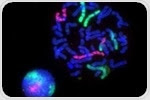| ||||||||||||||||||||||||
| ||||||||||||||||||||||||
| ||||||||||||||||||||||||
| ||||||||||||||||||||||||
| ||||||||||||||||||||||||
jueves, 8 de noviembre de 2018
Multiphoton microscope for neurobiology applications announced by Bruker at Neuroscience 2018
Multiphoton microscope for neurobiology applications announced by Bruker at Neuroscience 2018
Suscribirse a:
Enviar comentarios (Atom)




























.png)












No hay comentarios:
Publicar un comentario